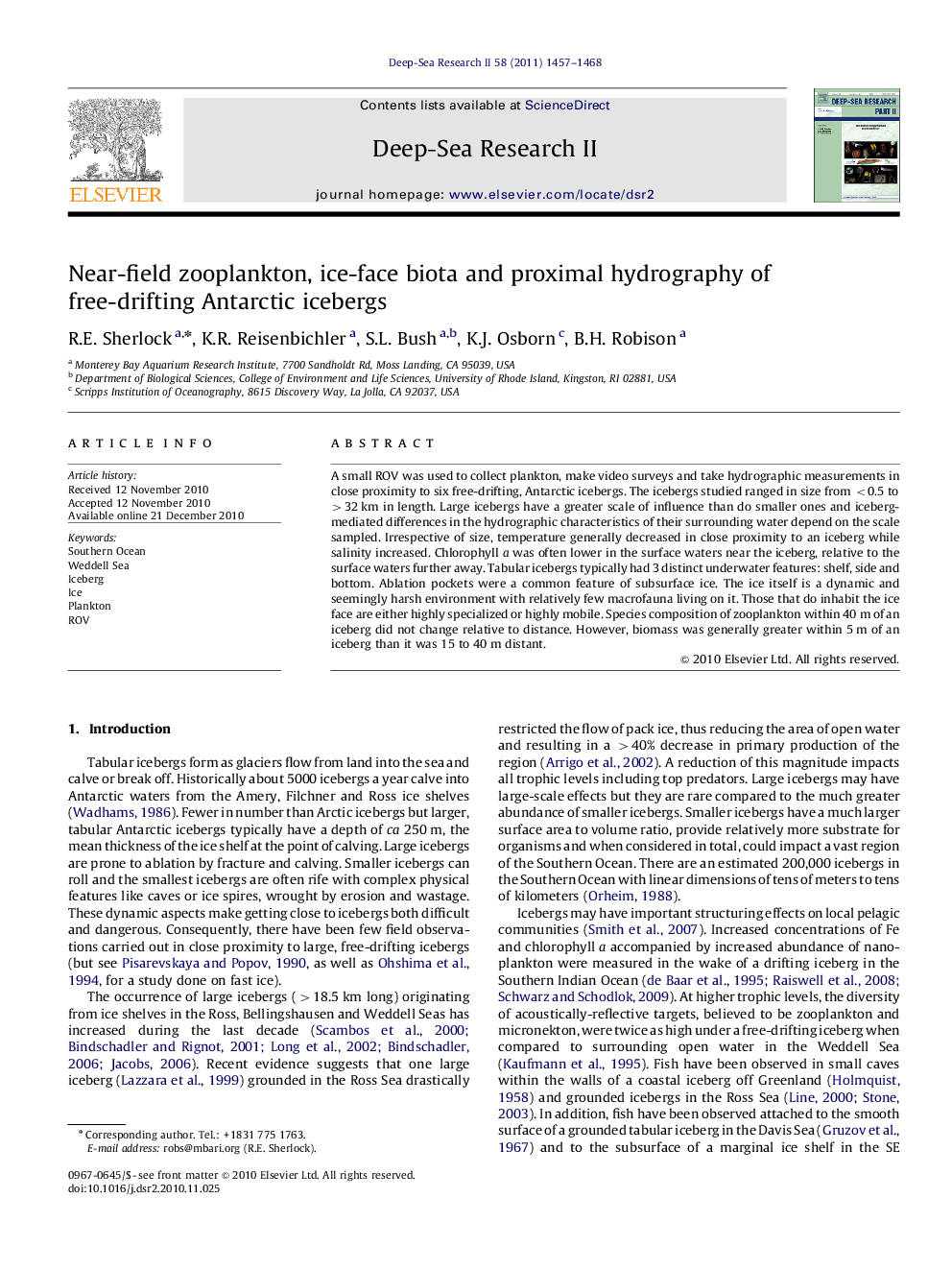| Article ID | Journal | Published Year | Pages | File Type |
|---|---|---|---|---|
| 4536878 | Deep Sea Research Part II: Topical Studies in Oceanography | 2011 | 12 Pages |
A small ROV was used to collect plankton, make video surveys and take hydrographic measurements in close proximity to six free-drifting, Antarctic icebergs. The icebergs studied ranged in size from <0.5 to >32 km in length. Large icebergs have a greater scale of influence than do smaller ones and iceberg-mediated differences in the hydrographic characteristics of their surrounding water depend on the scale sampled. Irrespective of size, temperature generally decreased in close proximity to an iceberg while salinity increased. Chlorophyll a was often lower in the surface waters near the iceberg, relative to the surface waters further away. Tabular icebergs typically had 3 distinct underwater features: shelf, side and bottom. Ablation pockets were a common feature of subsurface ice. The ice itself is a dynamic and seemingly harsh environment with relatively few macrofauna living on it. Those that do inhabit the ice face are either highly specialized or highly mobile. Species composition of zooplankton within 40 m of an iceberg did not change relative to distance. However, biomass was generally greater within 5 m of an iceberg than it was 15 to 40 m distant.
